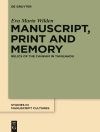This study is based on a manuscript which was carried by a Chinese monk through the monasteries of the Hexi corridor, as part of his pilgrimage from Wutaishan to India. The manuscript has been created as a composite object from three separate documents, with Chinese and Tibetan texts on them. Included is a series of Tibetan letters of introduction addressed to the heads of monasteries along the route, functioning as a passport when passing through the region. The manuscript dates to the late 960s, coinciding with the large pilgrimage movement during the reign of Emperor Taizu of the Northern Song recorded in transmitted sources. Therefore, it is very likely that this is a unique contemporary testimony of the movement, of which our pilgrim was also part. Complementing extant historical sources, the manuscript provides evidence for the high degree of ethnic, cultural and linguistic diversity in Western China during this period.
Despre autor
Sam van Schaik and Imre Galambos, British Library, London, UK.












